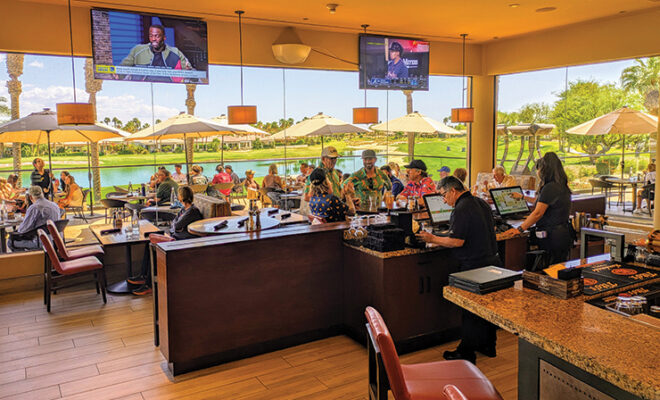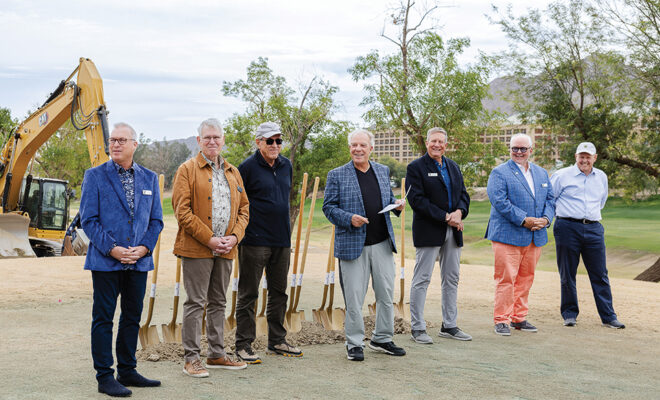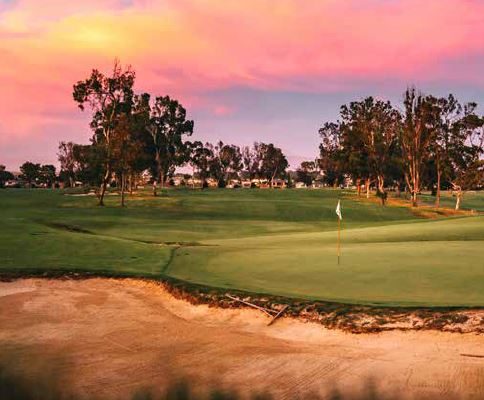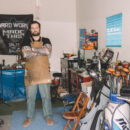TIME CAPSULE
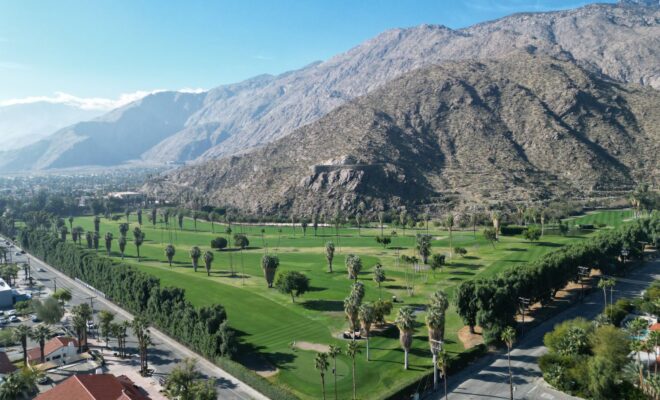
O’Donnell GC nears a century of living history
RARE IS THE connective golf tissue that genuinely fastens Palm Springs’ past to present. While homages to yesteryear abound across the Coachella Valley’s 120-course bounty, the region’s most historic fairways may be found upon a 35-acre plot of which few desert guests (and even most valley residents) are wholly unaware. And yet, nearing a century since its 1926 groundbreaking, the O’Donnell Golf Club finds neither wan nor wear as the valley’s oldest existing course; rather, the nine-hole grounds eschew golf ghosts in lieu of a rare and tangible spirit.
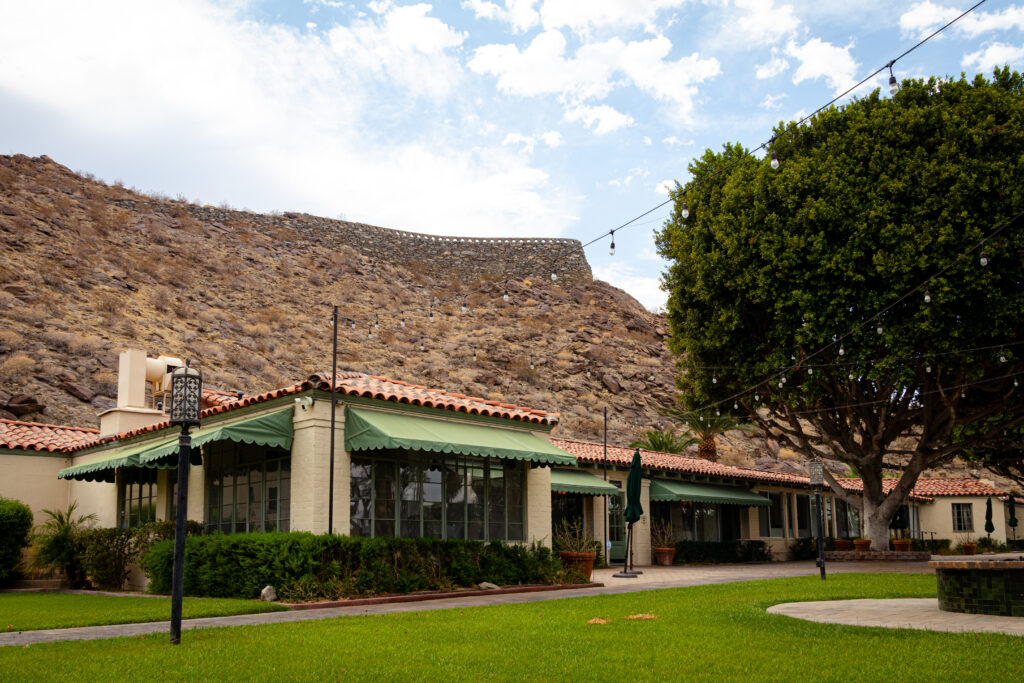
BUILDING A HOME COURSE
When Thomas O’Donnell purchased his Palm Springs land at the outset of the desert’s 1920s travel boom, the oil tycoon and golf nut couldn’t have fathomed that the seeds of his avocation and his learned, albeit amateur eye for course design would serve as foundation for a century’s worth of desert golf aesthetic, routing and agronomy.
“I think O’Donnell Golf Club is one of the most important historical sites in Palm Springs for many different reasons. It’s a place where one can experience a time capsule of what old Palm Springs was like,” says Steven Keylon, architectural and landscape historian and co-author of “Tom O’Donnell: Generous Spirit of Palm Springs.”
A regular at the valley’s first-ever track, the former Desert Inn’s now-gone pitch-and-putt “Mashie Course,” O’Donnell envisioned a golf experience proper for Palm Springs’ burgeoning array of visiting industrialists, tycoons and Hollywood glitterati.
Educated in course architecture by way of his own playing passions and visits to famed fairways across the globe, O’Donnell’s vision of a “home course” was very much that. In 1925, his 4,100-square-foot Ojo del Desierto (“Eye of the Desert”) residence was built, designed by noted architect William Charles Tanner in the Spanish Colonial-Revival style and set amid the Mount San Jacinto foothills overlooking the property.
The arid grounds below the home were soon cleared and graded, and the owner began working in tandem with fellow oilman/golf nut Captain J.F. Lucey to build the course the following year.
Their method? Stand at the selected site of the blank slate first tee amid the rocky elevation of O’Donnell’s driveway, bang drivers, go to the ball, hit irons, go to the ball and discern the first green site. Subsequent drills determined layout and card for the ensuing eight holes, and the aptly named par-35 “Desert Golf Course” was born.
Debuting in 1927 — with staggered tees to allow for 18 holes of play and diversity of club selection — the grounds’ demarcation wisely used the San Jacinto base for course routing, bookmarked on the property line by hearty tamarisk trees previously established as windbreaks for the Southern Pacific Railroad.
O’Donnell further researched the efficacy of a Bermudagrass base for his grounds, before eventually assessing the need for ryegrass planting come winter to stay green year-round; said “overseeding” process, of course, continues as a valley golf staple a century on.
LIVING HISTORY
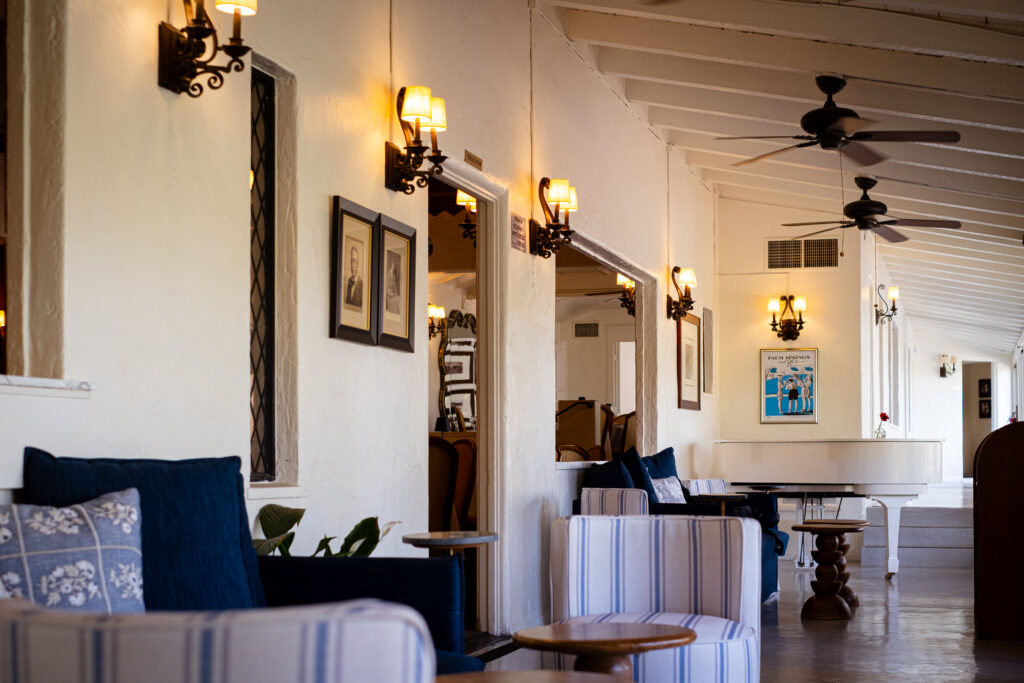
Among fewer than 100 golf properties across the country listed on the National Register of Historic Places, O’Donnell’s ongoing charm stems from its namesake’s adoration of setting, along with a commitment to embrace an aura of timelessness.
“There is something special here, a small and intimate feel,” says Alexandra Phillips, general manager at O’Donnell GC. “And with the members, we never talk about ‘redoing’ anything; we talk about ‘restoring.’”
The GM’s job requires a balance of history and present-day sensibilities for the club’s 235 golf members.
“We want to refurbish portions of the property, as this is the healthiest our membership has ever been,” continues Phillips. “Very active people and, for the first time, we have a wait list.”
While the Ojo house is now owned/rented out by the Soho House company, the property’s other Tanner-designed buildings and structures are still in club hands. At the Carriage House and chauffeur’s apartment, built in 1925, the drains where horses and buggies were washed remain. O’Donnell’s Golf Shop, built in 1933, is still the club hub for offices, tee times and locker rooms.
And, perhaps most notably, the Tanner-drawn Golf House (1936) along the sixth fairway is now the O’Donnell nexus for gathering. With Tom O’Donnell suffering from a heart condition and struggling for easy access to his course, he commissioned the course-side home so he could watch friends play and still derive enjoyment from the game’s socializations while betting dimes on their shots.
Today, the Golf House space makes use of the former residence as a member centerpiece for meeting, dining and a buoyant barroom.
“This was their home, and this was their original family room,” says Phillips of the club’s restaurant. “It’s our fireplace room for dinners now, and you can still feel that very intimate setting.”
Homages and vestiges remain throughout the Golf House, where the chef’s office has remnants of the home’s original bathtub hardware.
“The tub is still here, though we had to box it in,” smiles Phillips, “but you can still see the tub handles.”
The O’Donnell’s one-time master bedroom is now the ladies lounge, and the former second bedroom is now the club’s boardroom. And, of particular note, the Golf House Casita — now used to host philanthropic and community events — was the former physiotherapy office of one of the region’s leading osteopaths of the era, Dr. Winifred O’Donnell; the founder’s second wife also had offices in Long Beach and Los Angeles.
In fashion with O’Donnell’s enduring congruence, a descendant of the good doctor recently donated historical artifacts to the club, including Dr. Winifred’s now-displayed surgeon’s certificate.
“Pretty amazing to have these documents here now, especially considering the rarity of female doctors at the time,” enthuses Phillips. “And this was a big part of the creation of Palm Springs. You have to have some kind of medical facility to create a city, right?”
Indoors or out, a belief around the club genuinely exists that the O’Donnell spirit remains on-property, whether assisting with a timely fairway bounce or … paying a visit to their on-course home.
“There are definitely some employees who have had some experiences in here; nobody likes to be in here alone,” says Phillips in earnest about the Golf House. “People have said they hear footsteps walking along the hallways. That’s Thomas and Winifred walking around here. But I don’t come in here by myself, so I haven’t heard the steps.”
HIDDEN IN PLAIN SIGHT
From hosting the likes of Clark Gable, Bing Crosby and Bob Hope in its growing years to holding the Palm Springs Invitational Golf Championship from 1936 into the 1960s (where Ken Venturi, Harvie Ward and Al Geiberger all dueled) the initial O’Donnell layout has, remarkably, remained the same.
On-course character (if not idiosyncrasy) is narrated by a respect for maintaining historic integrity. Take the 357-yard par-4 second hole: “The (Mexican fan) palm trees bordered the original driveway up to the O’Donnell house,” says Phillips. “That’s why they remain in a line, and why you have to play through the palms on your approach.”
Following the famed foothill tongue on the blind, 125-yard par-3 fifth tee shot, the seventh tee box, once elevated and adjacent to the Carriage House, presents a rare course adjustment; over time, the box was lowered to ground level to ensure players didn’t drive balls into the parking lot of the now-adjacent Palm Springs Art Museum.
O’Donnell’s presence remains a mystery to most, despite its setting mere steps from Palm Springs’ main drag.
“Most people are oblivious to the fact it’s there,” says Keylon, “even though it’s hiding in plain sight just a block away from Palm Canyon Drive.”
From the laughter of the bar to footsteps on floorboards to a near-century of history, O’Donnell GC echoes both time and timelessness.
“The reason the tribes settled in Palm Springs thousands of years ago was primeval enclosure and safety provided by the mountains; just this feeling of comfort,” Keylon concludes. “To have the course right against the mountains, there’s a sense of being enclosed. It all contributes to this feeling of all the years of love at O’Donnell, and that does become palpable.”


